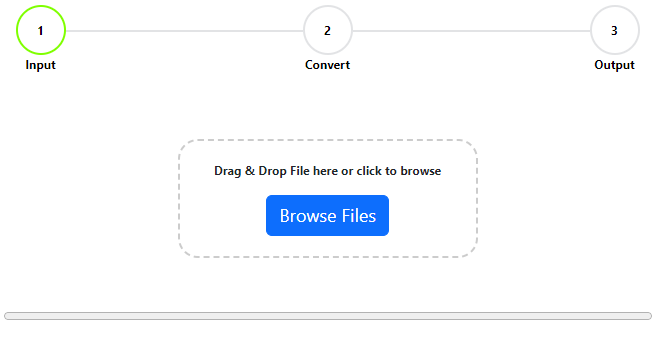85 applications and use cases for satellite imagery
- Agriculture: satellite imagery can be used for crop monitoring, yield prediction, and irrigation planning.
- Forestry: satellite imagery can be used for forest mapping, monitoring, and management.
- Environmental monitoring: satellite imagery can be used for monitoring land use, water quality, and natural disasters.
- Disaster response and relief: satellite imagery can be used to assess the extent of damage from natural disasters and plan response and relief efforts.
- Urban planning: satellite imagery can be used to map and analyze urban areas, including infrastructure, buildings, and land use.
- Cartography and mapping: satellite imagery can be used to create detailed maps of the Earth’s surface.
- Climate and weather prediction: satellite imagery can be used to monitor and analyze atmospheric conditions for weather forecasting and climate modeling.
- National security and defense: satellite imagery can be used for surveillance, intelligence gathering, and military operations.
- Energy and mining: satellite imagery can be used for exploration, resource mapping, and infrastructure development in the energy and mining industries.
- Maritime navigation and transportation: satellite imagery can be used for ship tracking, routing, and search and rescue operations.
- Infrastructure inspection: satellite imagery can be used to monitor and inspect infrastructure such as roads, bridges, and power lines.
- Real estate: satellite imagery can be used for property assessment and analysis.
- Insurance: satellite imagery can be used for risk assessment and claims investigation.
- Telecommunications: satellite imagery can be used for network planning and coverage analysis.
- Scientific research: satellite imagery can be used for a wide range of scientific applications, including earth science, atmospheric science, and oceanography.
- Agriculture: satellite imagery can be used for precision agriculture, including field mapping, planting, and yield prediction.
- Archaeology: satellite imagery can be used to identify and map archaeological sites.
- Disaster management: satellite imagery can be used to monitor and manage natural disasters such as earthquakes, hurricanes, and floods.
- Geology: satellite imagery can be used for geological mapping and analysis.
- Hydrology: satellite imagery can be used for water resource management and flood prediction.
- Land use planning: satellite imagery can be used to map and analyze land use patterns.
- Law enforcement: satellite imagery can be used for surveillance, investigation, and crime scene analysis.
- Oceanography: satellite imagery can be used for ocean mapping and monitoring.
- Oil and gas: satellite imagery can be used for exploration, production, and transportation of oil and gas.
- Defense and intelligence: satellite imagery can be used for military operations, surveillance, and intelligence gathering.
- Emergency services: satellite imagery can be used for disaster response and search and rescue operations.
- Environmental conservation: satellite imagery can be used for monitoring and protecting natural resources and ecosystems.
- Fisheries management: satellite imagery can be used for monitoring and managing fish populations.
- Flood prediction: satellite imagery can be used for early warning and response to flooding events.
- Geothermal energy: satellite imagery can be used for geothermal resource mapping and exploration.
- Humanitarian aid: satellite imagery can be used to assess the needs and plan response to humanitarian crises.
- Ice monitoring: satellite imagery can be used to monitor and track ice cover, including glaciers and sea ice.
- Infrastructure development: satellite imagery can be used for planning and construction of infrastructure such as roads, bridges, and power plants.
- Wildfire mapping and monitoring: satellite imagery can be used to monitor and track the spread of wildfires, as well as assess their impact on the landscape.
- Marine conservation: satellite imagery can be used to monitor and protect marine ecosystems, including coral reefs and coastal areas.
- Wildlife management: satellite imagery can be used to monitor and manage wildlife populations, including migration patterns and habitat use.
- Coastal zone management: satellite imagery can be used to monitor and manage coastal areas, including water quality, land use, and natural disasters.
- Agricultural insurance: satellite imagery can be used to assess crop damage and support claims processing for agricultural insurance.
- Land tenure: satellite imagery can be used to map and document land ownership and use rights.
- Water resource management: satellite imagery can be used to monitor and manage water resources, including reservoirs, rivers, and aquifers.
- Urban growth and development: satellite imagery can be used to track and analyze the growth and development of urban areas.
- Land degradation and desertification: satellite imagery can be used to monitor and assess land degradation and desertification, and plan interventions to prevent further damage.
- Natural hazard assessment: satellite imagery can be used to assess the potential impact of natural hazards such as earthquakes, volcanoes, and landslides.
- Coastal erosion: satellite imagery can be used to monitor and assess coastal erosion, and plan interventions to prevent further damage.
- Geological mapping: satellite imagery can be used to create detailed geological maps of the Earth’s surface.
- Coastal flooding: satellite imagery can be used to monitor and assess the risk of coastal flooding, and plan interventions to prevent damage.
- Land cover mapping: satellite imagery can be used to map and classify the types of land cover on the Earth’s surface, including forests, grasslands, and urban areas.
- Biodiversity conservation: satellite imagery can be used to monitor and protect biodiversity, including endangered species and their habitats.
- Infrastructure monitoring: satellite imagery can be used to monitor the condition and performance of infrastructure such as roads, bridges, and power lines.
- Land use change: satellite imagery can be used to track and analyze changes in land use over time, such as deforestation or urbanization.
- Environmental impact assessment: satellite imagery can be used to assess the potential environmental impacts of development projects, such as mines, dams, and airports.
- Soil erosion: satellite imagery can be used to monitor and assess soil erosion, and plan interventions to prevent further damage.
- Forest conservation: satellite imagery can be used to monitor and protect forests, including tracking illegal logging and deforestation.
- Water resource planning: satellite imagery can be used to identify and map water resources, and plan their use and management.
- Mineral exploration: satellite imagery can be used to identify and map potential mineral deposits, and support exploration and mining activities.
- Land rehabilitation: satellite imagery can be used to monitor and assess land rehabilitation efforts, such as reforestation or restoration of degraded lands.
- Coastal management: satellite imagery can be used to monitor and manage coastal areas, including water quality, land use, and natural disasters.
- Flood risk assessment: satellite imagery can be used to assess the risk of flooding, and plan interventions to prevent or mitigate damage.
- Agricultural productivity: satellite imagery can be used to monitor and assess agricultural productivity, and identify potential areas for improvement.
- Land registration: satellite imagery can be used to support land registration and tenure systems, including mapping and documentation of land ownership.
- Environmental monitoring: satellite imagery can be used to monitor and assess the health and condition of natural environments, including forests, wetlands, and grasslands.
- Infrastructure planning: satellite imagery can be used to identify and map potential sites for infrastructure development, such as roads, bridges, and power plants.
- Carbon sequestration: satellite imagery can be used to monitor and assess the potential for carbon sequestration in forests and other natural environments.
- Land tenure security: satellite imagery can be used to support land tenure security and land rights, including mapping and documentation of land ownership.
- Coastal erosion management: satellite imagery can be used to monitor and assess coastal erosion, and plan interventions to prevent further damage.
- Environmental impact monitoring: satellite imagery can be used to monitor the impacts of development projects, such as mines, dams, and airports, on the environment.
- Urban heat island mapping: satellite imagery can be used to map and assess the intensity of urban heat islands, and plan interventions to reduce their impact.
- Land use zoning: satellite imagery can be used to support land use zoning and planning, including identification and mapping of different land use categories.
- Land degradation monitoring: satellite imagery can be used to monitor and assess land degradation, and plan interventions to prevent further damage.
- Land use change analysis: satellite imagery can be used to analyze and track changes in land use over time, such as deforestation or urbanization.
- Habitat conservation: satellite imagery can be used to monitor and protect habitats for endangered species and other wildlife.
- Forest carbon stock assessment: satellite imagery can be used to assess the carbon stock of forests, and support efforts to reduce greenhouse gas emissions.
- Water quality monitoring: satellite imagery can be used to monitor and assess water quality, including the presence of pollutants and harmful algal blooms.
- Wildlife habitat mapping: satellite imagery can be used to map and assess the quality and availability of habitats for wildlife.
- Land cover classification: satellite imagery can be used to classify and map the different types of land cover on the Earth’s surface, such as forests, grasslands, and urban areas.
- Wetland mapping: satellite imagery can be used to identify and map wetlands, and assess their ecological importance.
- Natural disaster monitoring: satellite imagery can be used to monitor and track natural disasters such as earthquakes, hurricanes, and floods.
- Forest inventory: satellite imagery can be used to assess the size, health, and productivity of forests, and support forest management and conservation.
- Agriculture and food security: satellite imagery can be used to monitor and assess agricultural production and food security, and support efforts to increase productivity and reduce hunger.
- Land use planning and zoning: satellite imagery can be used to support land use planning and zoning, including identification and mapping of different land use categories.
- Environmental monitoring and assessment: satellite imagery can be used to monitor and assess the health and condition of natural environments, including forests, wetlands, and grasslands.
- Coastal zone management: satellite imagery can be used to monitor and manage coastal areas, including water quality, land use, and natural disasters.
- Soil moisture mapping: satellite imagery can be used to map and assess the moisture content of soils, and support agriculture, water management, and natural hazard assessment.
- Wetland conservation: satellite imagery can be used to monitor and protect wetlands, and assess their ecological importance.
- Flood mapping and modeling: satellite imagery can be used to map and model flood risks, and support planning and response efforts





